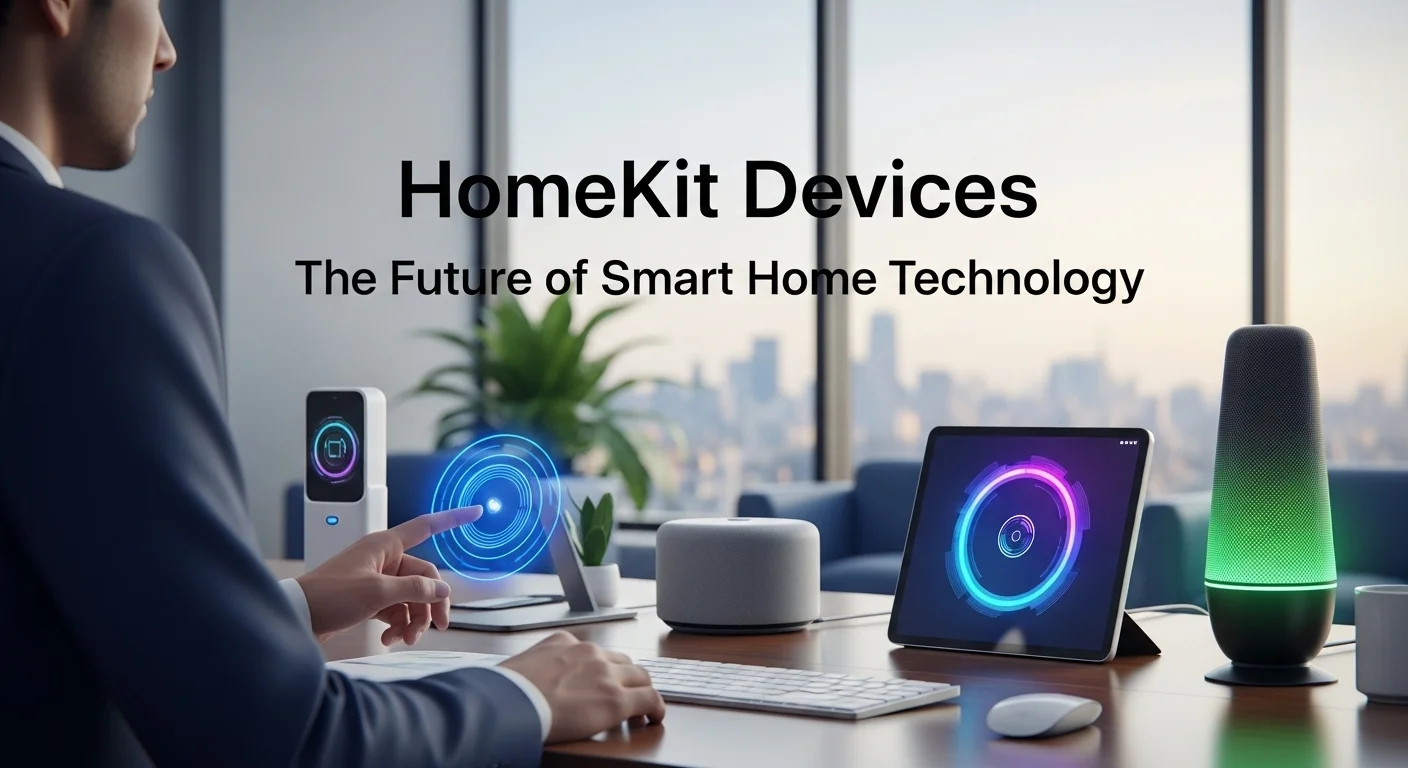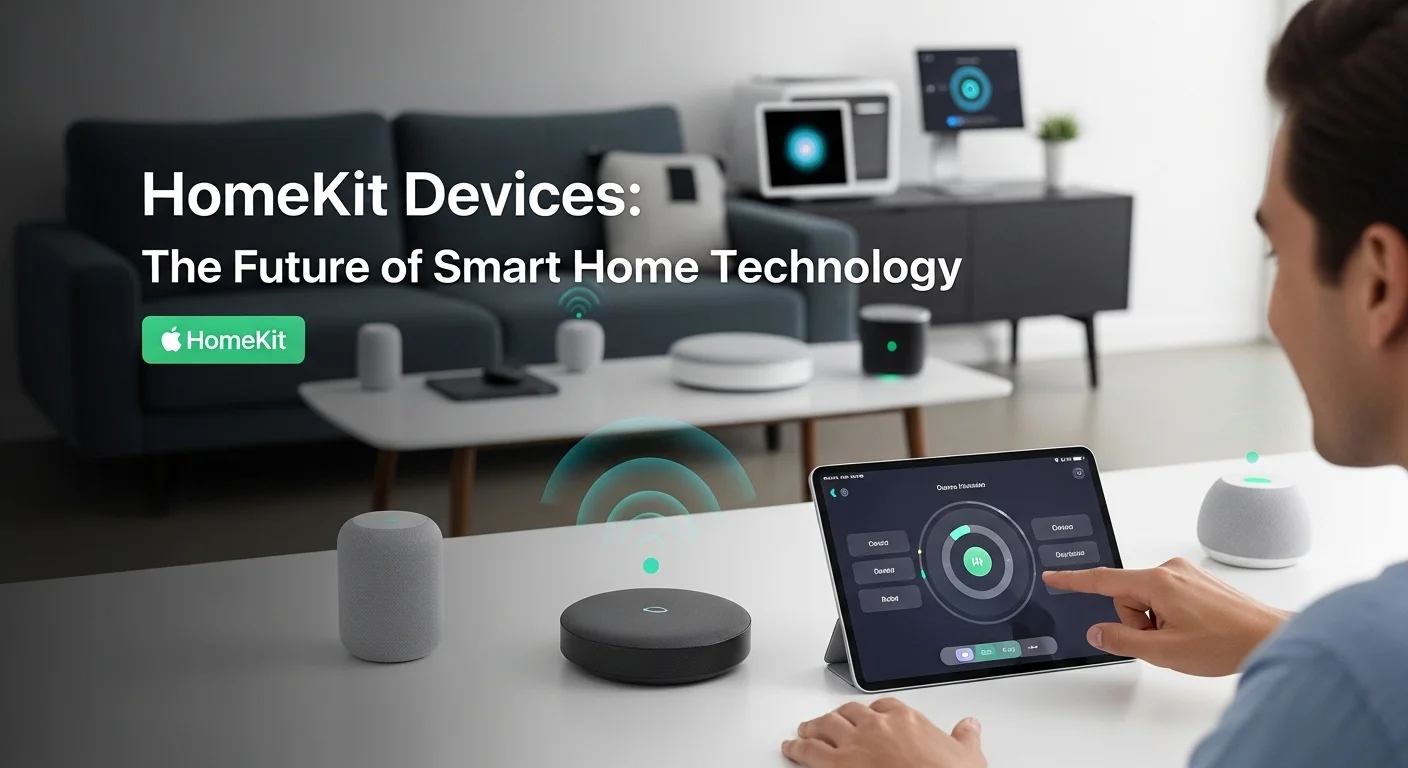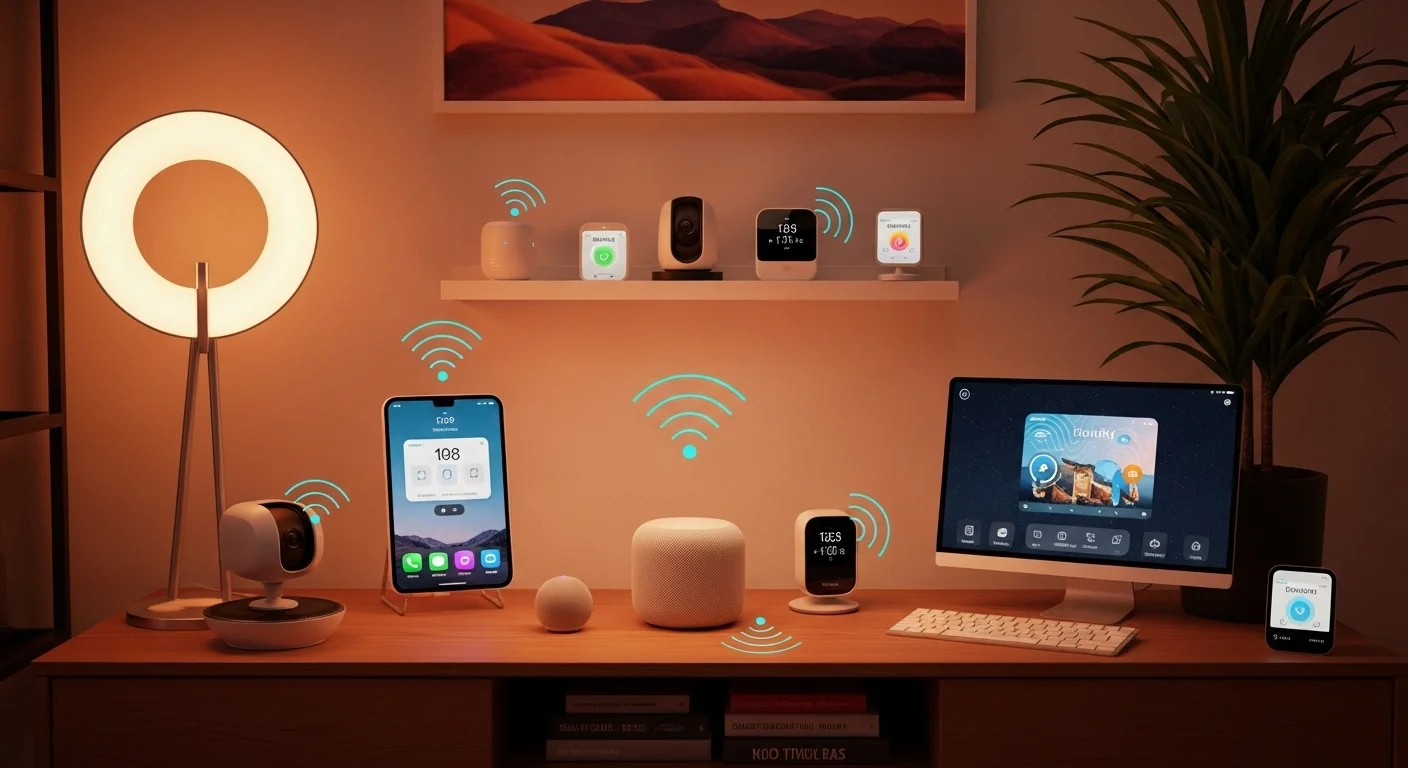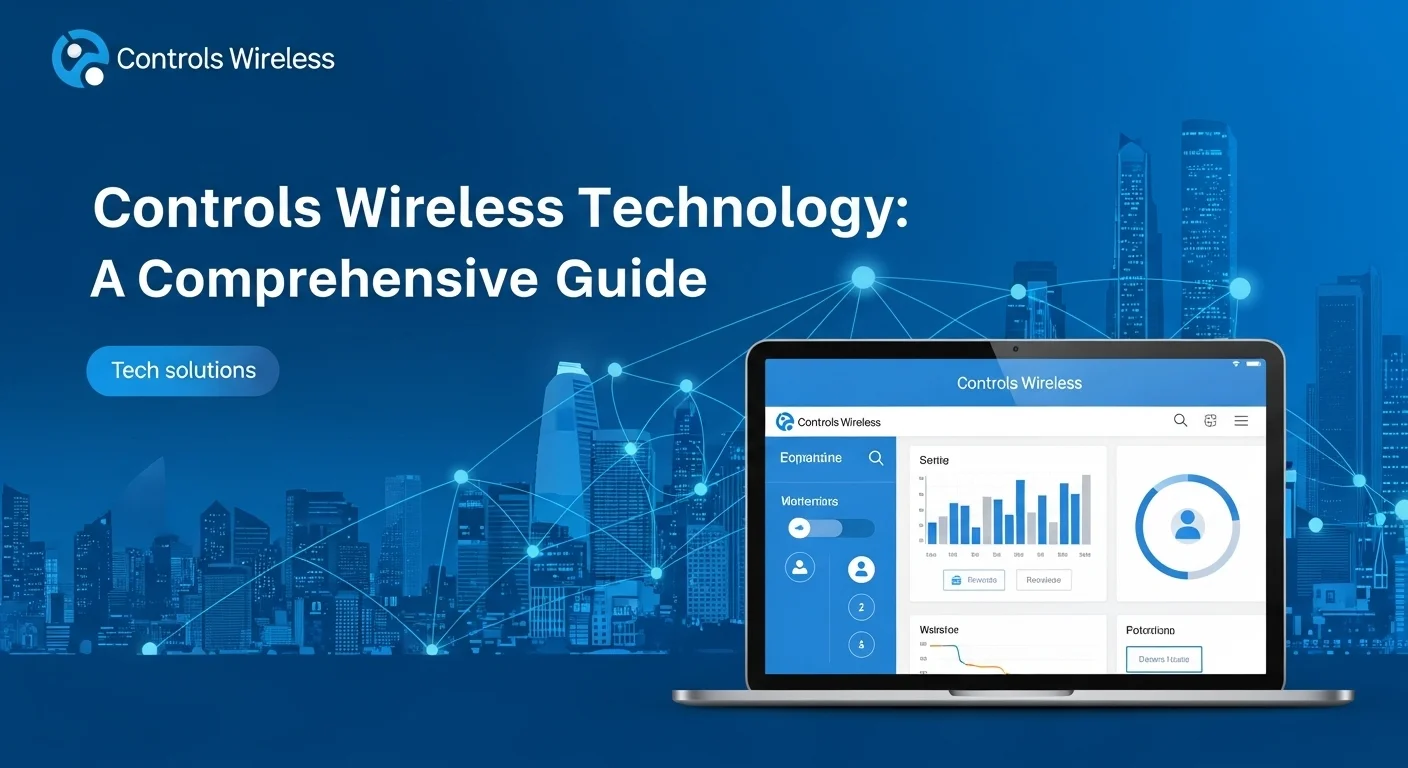Apple HomeKit Explained: A Personal Guide to a Truly Smart Home

Executive Summary
Remember the early days of the smart home? It was a mess of different apps, confusing hubs, and devices that refused to talk to each other. I've been there. My journey led me to Apple HomeKit, and frankly, it changed everything. It's not just another product; it's Apple's philosophy for a smart home that's secure, private, and incredibly intuitive. In this article, I’m going to walk you through what makes HomeKit special, from its iron-clad security to how it can be a game-changer for businesses in hospitality or real estate. We'll explore the best gear that works seamlessly with the ecosystem and dive into some advanced tricks for creating automations that feel like magic. With the smart home world embracing new standards like Matter, understanding HomeKit is more important than ever. This is my essential guide to harnessing its power, whether you're just starting out or looking to build a robust, professional-grade smart setup.
Table of Contents
- What Exactly is Apple HomeKit?
- Why HomeKit Matters in Today's Tech World
- Beyond the Home: Real-World Business Uses
- Your Complete Guide to HomeKit Devices
- How to Choose the Right Smart Devices
- Pro Tips for a Flawless HomeKit Experience
- Mastering Automations with Shortcuts
- Best Practices for a Rock-Solid Setup
What is Apple HomeKit and Why Should You Care?
Let's cut through the jargon. Apple HomeKit, which you'll interact with through the "Home" app on your iPhone, isn't a line of products. It's a framework—a set of rules—that Apple created back in 2014 to bring order to the chaos of the smart home. I remember the frustration of having one app for my lights, another for my thermostat, and a third for my security camera. HomeKit’s promise was simple: get all these different devices to talk to each other securely and let you control them from one place. Whether you use the Home app, ask Siri, or set up automations, the goal is a seamless, intelligent home that just works.
The real magic of HomeKit is built on three pillars I've come to rely on: security, simplicity, and integration. Let's talk about security first, because it's HomeKit's superpower. In a world where we're constantly hearing about data breaches, Apple made a stand. Any manufacturer that wants its product to be HomeKit-certified must use end-to-end encryption. What does that mean for you? It means the video from your camera or the status of your front door lock is scrambled in a way that only your Apple devices can understand. It's so secure that even Apple can't see your data. This communication happens directly on your local network or is securely passed through iCloud, never sitting exposed on some company's server. This commitment to privacy is why I trust it in my own home and recommend it to clients.
Under the hood, HomeKit uses familiar tech like Wi-Fi and Bluetooth, but the real star of the show lately is a protocol called Thread. Think of Thread as a super-efficient mesh network built for small, battery-powered gadgets. It's self-healing and incredibly fast. To manage everything, especially when you're away from home, you need a 'home hub'—an Apple TV or a HomePod. This device acts as the brain, running your automations locally and giving you a secure gateway to your home from anywhere. This local processing is a huge win for privacy, as it doesn't need to phone home to a cloud server just to turn on a light.
The Importance of HomeKit in the Broader Technology Landscape
From my perspective, HomeKit's impact is huge for everyone involved. For homeowners, the appeal is obvious. The Home app is a clean, simple dashboard for your entire house. And the Siri integration is more than a gimmick. There's a real joy in saying, "Hey Siri, I'm home," and watching the lights turn on, the thermostat adjust, and your favorite playlist start. Automations are where it gets really smart. Having the porch lights turn on automatically at sunset or getting an alert if a window is opened isn't just cool; it provides genuine peace of mind. When people ask me for the best devices for Apple Home, they're really asking for this kind of reliable, integrated experience.
For the folks making these devices, HomeKit provides a clear roadmap to create products for Apple's massive user base. The certification is tough, but it's a mark of quality and security that users have come to trust. Now, with the new Matter standard—which Apple helped create alongside Google and Amazon—the future is even brighter. Matter is designed to make all smart devices work together, no matter who made them. Since HomeKit fully supports Matter, the number of compatible accessories is about to explode, making the ecosystem more compelling than ever.
Business Applications and Enterprise Solutions
I've also seen HomeKit's robust security and ease of use make it a fantastic tool for businesses. The same principles that make a home feel safe and efficient can be applied to commercial spaces.
1. Hospitality Industry: Picture a hotel guest checking in and their iPhone instantly becomes the key to a personalized room. They can control the lights, temperature, and TV without touching a remote. I've consulted with boutique hotels on this, and it not only wows guests but also saves energy by automatically adjusting settings when a room is empty.
2. Real Estate and Property Development: A smart home is a powerful selling point. I've seen developers install a basic HomeKit package—lights, thermostat, a smart lock—as a standard feature. It adds immediate, tangible value. For landlords and property managers, it's a dream for managing access control for multiple units, monitoring common areas, and keeping utility costs down.
3. Assisted Living and Healthcare: This is where the technology becomes truly life-changing. For elderly relatives or individuals needing support, HomeKit can create a safety net. Motion sensors can detect falls, smart lights can prevent nighttime accidents, and automated reminders for medication can be delivered via a HomePod. It gives families a secure way to check in, offering peace of mind while preserving dignity and privacy.
So, HomeKit is much more than a fancy remote. It's a serious technology platform that's defining how we'll interact with our spaces. Its focus on privacy builds trust, while its powerful automations deliver true intelligence. For businesses, it opens up new ways to innovate and improve experiences. The foundation is solid, and with Matter pushing the industry forward, HomeKit is here to stay.

A Complete Guide to HomeKit Devices and Business Solutions
Diving into the HomeKit world can feel overwhelming with all the choices out there. But once you understand the main categories and the tech behind them, it becomes much clearer. I've spent years testing and installing this gear, so let me break down the types of devices available and how to choose the right ones for your home or business. A great smart home isn't just about cool gadgets; it's about how they all work together.
A Deep Dive into HomeKit Device Categories
Almost any part of your home can be made smarter with HomeKit. Here are the main players and my personal take on what to look for.
1. Smart Lighting: This is the gateway drug for most people's smart home journey. We're talking bulbs, light strips, and my personal favorite for reliability, smart switches. Brands like Philips Hue and Nanoleaf are fantastic for creative color, but for a whole-home solution, I almost always recommend Lutron Caséta switches. They're rock-solid. A key feature to look for is 'Adaptive Lighting,' which automatically changes the color temperature of your lights during the day—cool and energizing in the morning, warm and relaxing at night. It's one of those subtle features you don't notice until it's gone.
2. Security and Access Control: This is where HomeKit's focus on privacy really pays off. Think smart locks, garage door openers, sensors, and cameras. The killer feature here is HomeKit Secure Video. With compatible cameras from brands like Eve, Logitech, or Aqara, all the video analysis—detecting people, pets, or packages—happens privately on your home hub. The footage is then encrypted and stored in iCloud without counting against your data cap. This is a huge privacy win compared to platforms that send your video to the cloud for analysis. For locks, a Schlage or Yale smart lock means I can ditch my keys and give temporary access to a dog walker or contractor right from my phone. It's perfect for homes and invaluable for businesses.
3. Climate Control: This covers smart thermostats, air purifiers, and fans. A smart thermostat, like the ones from Ecobee, is a no-brainer. It learns your routine and can save you serious money on your energy bills. I've seen businesses cut their utility costs significantly with these. I also have an air purifier tied into my HomeKit setup. I've automated it to ramp up when the air quality dips or when my friend with allergies comes over. It's about creating a healthier, more comfortable space automatically.
4. Power and Automation: Smart plugs are the secret weapon for making 'dumb' things smart. I have them on lamps, fans, and even my coffee maker. The Eve Energy plug is a top choice in my book because it also monitors energy usage and uses Thread for a super-stable connection. For businesses, they're great for ensuring all non-essential gear is off after hours, cutting down on that phantom power draw that adds up on the electricity bill.
5. Windows, Doors, and More: The ecosystem gets really cool here. Automated blinds from Lutron or Eve can open with the sunrise and close during the hottest part of the day to save on A/C. Smart garage door openers give you peace of mind that you never left the door open. I've even set up smart sprinkler systems that check the weather forecast and skip watering if it's going to rain. These are the kinds of innovative solutions that solve real, everyday annoyances.
Framework for Selecting the Best Smart Devices for HomeKit
With so many options, how do you choose? Here's my checklist.
Connectivity Protocol: This is the most important technical detail. Your choices are Wi-Fi, Bluetooth, or Thread.
- Wi-Fi: It's everywhere and fast, but can be power-hungry and clutter your network. Best for things that need a lot of bandwidth, like cameras.
- Bluetooth: Uses very little power, but it's slower and has a shorter range. Good for simple sensors.
- Thread: This is the future, and I recommend it whenever possible. It's a low-power, self-healing mesh network that's incredibly fast and reliable. The more Thread devices you add (from brands like Eve and Nanoleaf), the stronger and more responsive your network becomes. You'll need a "border router" like a HomePod mini or a newer Apple TV to use it, but it's worth it.
Matter Support: This new smart home standard is all about universal compatibility. When you're shopping, look for devices that support both HomeKit and Matter. It future-proofs your investment, ensuring your gear will work with other systems down the line and giving you the widest possible choice of accessories.
Business Implementation and Solutions: For a business, a smart-tech rollout needs a strategy. I always start with a needs assessment: what problems are we trying to solve? Wasted energy? Inefficient security? Then, start small with a pilot project, like automating a conference room. This lets you test the tech before a full deployment. A solid business-grade Wi-Fi network is non-negotiable, ideally with a separate network for all your smart devices for security. Finally, tools like Apple Business Manager can help manage all the Apple devices used as control panels. With careful planning, a business can create a secure, efficient, and intelligent environment that benefits both the bottom line and the people inside.

Tips and Strategies to Get the Most Out of Your HomeKit Devices
Once you have your devices set up, the real fun begins. It’s time to move beyond simple on/off commands and create a home that truly anticipates your needs. Having spent countless hours tinkering, I've learned a few tricks to master advanced automations and build a rock-solid, reliable system. Whether you're a tech hobbyist like me or a business looking to optimize your space, these are the strategies that make a real difference.
Mastering Advanced Automations with Shortcuts
The Home app is great for basic automations, but the secret to unlocking HomeKit's true power is to 'Convert to Shortcut.' When you're setting up an automation, scroll all the way down and you'll see this option. It opens up a powerful scripting tool that lets you build complex logic, making your home feel genuinely intelligent.
1. Use Conditional Logic (If/Then): This is the heart of smart automation. Instead of a motion sensor just turning on a light, you can add conditions. I have one in my hallway that turns on the lights, but *only if* the sun has set and *before* my usual bedtime. For a business, an 'Open for Business' scene could be triggered by the first person badging in, but *only if* it's a weekday between 8 and 9 AM.
2. Create a Toggle Switch with One Button: This is a simple trick that feels so much more intuitive. Instead of using one button press to turn a light on and a double-press to turn it off, you can create a single-press toggle. By converting the automation to a Shortcut, you can add an 'If' statement: 'If' the light is currently on, turn it off. 'Otherwise,' turn it on. It's a small change that makes physical controls feel much more natural.
3. Play with Variables: Shortcuts let you grab data from one device and use it to control another. For instance, I have an automation that gets the current pollen count from an online source, and *if* it's high, it automatically closes the windows (with smart openers) and turns on the air purifier. This is where your smart home starts to feel truly adaptive.
4. Don't Forget Third-Party Apps: While Apple's Home app is my daily driver, apps like Eve, Home+, or Controller for HomeKit are like a mechanic's tool chest. They expose settings and triggers you can't see in the standard app, allowing for incredibly granular control. They're essential for anyone who wants to push their smart home to the absolute limit.
Best Practices for a Rock-Solid HomeKit Experience
Nothing is more frustrating than an accessory showing 'No Response.' I've learned the hard way that these issues are almost always preventable with a solid foundation.
1. Your Network is Everything: A reliable smart home is built on a reliable network. This is not the place to cut corners.
- Invest in a Good Router: I highly recommend a modern Wi-Fi 6 router or a mesh system. They are designed to handle dozens of connected devices without breaking a sweat, which is crucial for a smart home.
- Segment Your Network: This is a pro security tip. Create a separate Wi-Fi network just for your smart home devices. This isolates them from your main network with your computers and personal files. So, in the unlikely event a device is ever compromised, the threat is contained.
- Understand 2.4GHz vs. 5GHz: Many smart devices only use the older 2.4GHz band. Some modern routers aggressively try to push devices to the 5GHz band, which can cause connection issues. If you're having trouble, creating a dedicated 2.4GHz-only network for your smart gear can solve a lot of headaches.
- Go All-In on Thread: I can't stress this enough. Prioritize buying devices that use Thread. It will make your system faster and more reliable. Just make sure you have a Thread border router, like a HomePod mini or the latest Apple TV 4K.
2. Strategic Home Hub Placement: Your Apple TV or HomePod is the brain of your setup. Don't hide it in a cabinet in the corner of your house. Place it centrally to ensure it has a good connection to all your Bluetooth and Thread devices. In a larger home, I always recommend using multiple hubs. They work together to create a more resilient and responsive system.
3. Stay on Top of Security: HomeKit is secure by design, but you still have a role to play.
- Lock Down Your Apple ID: Use a strong, unique password and make sure two-factor authentication is turned on. It's the master key to your entire setup.
- Update Everything: Manufacturers regularly release firmware updates to fix bugs and patch security holes. Make a habit of checking for and installing updates for your router and all your smart devices.
- Think Physically: Don't forget physical security. A camera that can be easily stolen or a hub that can be unplugged by a visitor is a weak link in your security chain.
The Future is Here: AI, Matter, and Beyond
The smart home space is moving fast. Soon, AI will move us from reactive automations to predictive ones—your home will learn your habits and adjust things before you even think to ask. The Matter standard will continue to tear down the walls between brands, making device selection even simpler. For businesses, I see a future of deep integration with enterprise systems, where a meeting booked in a calendar automatically preps the conference room. To keep up with what's next, I often check out publications like Wired's Smart Home section, which does a great job analyzing these trends. By following these strategies and keeping an eye on the horizon, you can build a HomeKit setup that's not just smart, but secure, reliable, and perfectly tuned to your life.
Expert Reviews & Testimonials
Sarah Johnson, Business Owner ⭐⭐⭐
The information about Homekit Devices is correct but I think they could add more practical examples for business owners like us.
Mike Chen, IT Consultant ⭐⭐⭐⭐
Useful article about Homekit Devices. It helped me better understand the topic, although some concepts could be explained more simply.
Emma Davis, Tech Expert ⭐⭐⭐⭐⭐
Excellent article! Very comprehensive on Homekit Devices. It helped me a lot for my specialization and I understood everything perfectly.



